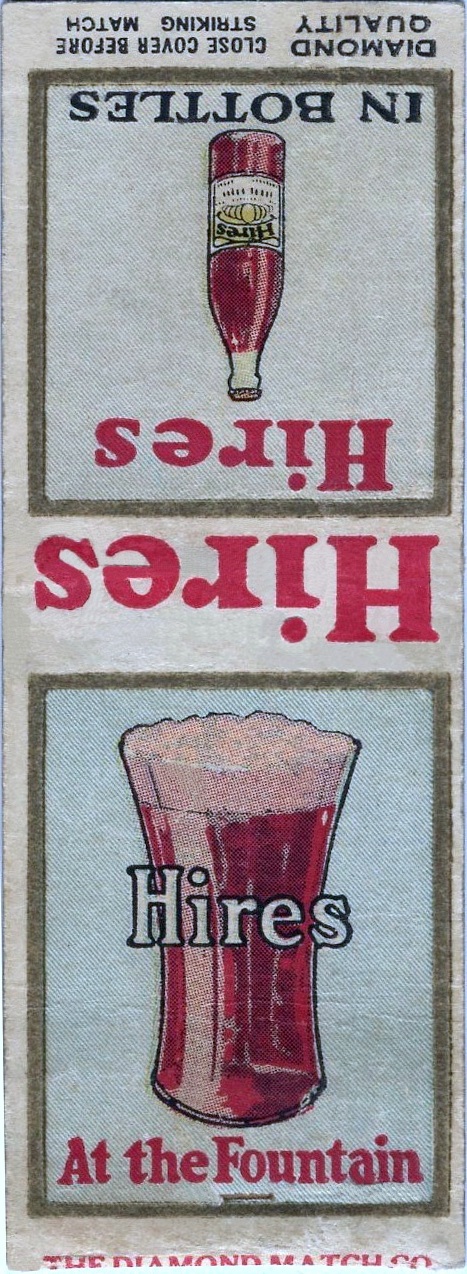1930
IT HAPPENED IN…1930
The U.S. Census recorded a population of
122,775,046.
Over 1,300 banks closed due to the worsening U.S.
economy.
U.S. unemployment reached 4.5 million people.
Kentucky enacted the first state retail sales
tax.
There were 13 million radio sets in the U.S.
Newly introduced products and inventions included
freon refrigerant, flash bulbs for cameras, plexiglass, cellophane
tape, supermarkets, Hostess Twinkies, Snickers candy bars, and Toll
House cookies.
The Lone Ranger debuted on radio.
Donald Duck made his initial movie screen
appearance.
The soft drink industry reported annual sales
estimated at $207 million.
Bireley’s Orange drink was introduced.
Chocolate drinks were popular, including Chocolate Soldier,
Mavis, Choc-au-lait, Brownie, Chocolate Mello, Kayo, and Kremko.
Charles G. Guth and Loft, Inc. purchased the
bankrupt Pepsi-Cola Company for $12,000.
7,646 U.S. soft drink bottling plants were in
operation. Per capita
consumption was 49.0 bottles.
Hires
kicked off the 1930s by distributing a four page, fold-out, pocket-sized
Hires Household Extracts
Wholesale Price List brochure detailing Hires Root Beer, Ginger
Beer, and Birch Beer Extract pricing, and also outlining the company’s
planned advertising campaign for 1930.
In addition to “timely newspaper advertising…for many cities,”
Hires intended to target market 100 million housewives via magazines,
250,000 doctors via medical journals, and over 200,000 teachers via
educational bulletins.
Attributing a 40% increase in sales during 1928-1929 to the distribution
of thousands of samples, Hires planned for “greater sampling in
1930…bringing many more new Hires Extract customers into dealers’
stores…creating each day larger turnover for our wholesalers.”
The 1930 advertising campaign was likely developed in late 1929
prior to the stock market crash, or before the potential ramifications
of the crash were considered.
The brochure also stretched Hires origin further into the past,
stating Hires had been in business “Since 1869.”
(Figure 1930-01,
Hires Household
Extracts Wholesale Price List)
The front of Hires Extract carton inserts remained
unchanged, while the back became a full page advertisement for numerous
products. An incorporated
coupon offered free samples of Hires Root Beer Candy Dice, Birch Beer
Extract, and Ginger Beer Extract, but for the first time Hires required
“4¢ for each sample to cover cost of mailing,” and specified payment via
“Stamps or Money Order.”
(Figure 1930-02, Hires
Household Extract insert, back)
The reusable, metal Hantite Cap crown closures advertised
in the 1930 price list were lined with leather, rather than cork that
was used for
standard crown caps. Hires
sold them to wholesalers for $3.00 per gross.
(Figure 1930-03, Hantite Cap
crown closure, top)
(Figure 1930-03, Hantite Cap
crown closure, bottom)
These two extract cartons each contained 3/5 ounce
sample-sized bottles of Hires Root Beer (Household Formula).
Note the lettering styles and coloring are different.
(Figure 1930-04, two different
sample Hires Root Beer Extract cartons)
(Figure 1930-05, sample Hires
Extract bottle)
These three cartons contained full-sized (three ounce) bottles of Hires Root Beer (Household Formula), Hires Ginger Beer (Old English Formula), and Hires Birch Beer.
(Figure 1930-06, Hires Root
Beer, Ginger Beer, and Birch Beer Extract cartons)
Hires’ promotion of products directly to school
children continued with the distribution of another
Normal Instructor and Primary
Plans bulletin in February, 1930.
This issue offered “FREE Samples of Hires Root Beer Extract for
You and Your Pupils” and includes testimonials, health tips, world maps
at 4¢ each, and a reminder about the contest with $3,000 in cash prizes.
The contest closed April 19, 1930.
Like the previous issue, this publication is large, so it is
presented as two, over-lapping images to provide full details.
(Figure
1930-07, Normal
Instructor and Primary Plans, February 1930)
The Advance Candy Company of New York City placed
this advertisement in the March, 1930 issue of
Confectioner’s Journal.
They had been producing candy “Hires Root Beer Drops” for six
months at that point.
(Figure
1930-08,
Confectioner’s Journal, March 1930)
Hires expanded into celebrity endorsement for product promotion with the creation of a brass belt buckle featuring an image of Noel Coward playing piano, along with his name and “Enjoy Hires.” Coward was a famous English playwright, actor, director, musical composer, and singer. He authored numerous highly popular stage plays during the 1920s and 1930s.
(Figure 1930-09, Noel Coward brass belt buckle, 2.0” x 2.75”)
These two magazine advertisements share similar formats.
(Figure 1930-10,
McCall’s,
May 1930)
(Figure 1930-11,
Collier’s,
June 7, 1930)
As part of a targeted marketing program to push customers to local storekeepers who handled Hires’ products, letters such as this example offered a free bottle of Hires Household Extract to recipients who presented the letter to the storekeeper.
(Figure 1930-12, target
marketing letter, June 20, 1930)
This clear, pedestal-based siphon is acid-etched
“Hires – Phila. Pa.” with a Jersey cow image in the center of the
etching.
(Figure 1930-13, clear,
pedestal-based siphon, acid-etched Hires – Phila. Pa.)
(Figure 1930-13.5,
Pictorial Review, August, 1930)
(Figure
1930-14, paper Hires Black Cow sign, 5.0” x 20.0”)
(Figure
1930-15, paper Hires Boston Cooler poster, 10.0” x 25.0”)
(Figure 1930-16, paper Hires
Ice Cream Soda sign, 5.0” x 20.0”)
(Figure 1930-17, paper Hires
Milk Shake sign, 5.0” x 20.0”)
(Figure 1930-18, paper Hires
Milk Shake poster, 9.0” x 41.0”)
(Figure 1930-19, paper Hires
Milk Shake sign, 5.0” x 20.0”)
(Figure 1930-20, paper Hires
Ice Cream Soda sign, 3.0” x 15.0”)
This well-worn, cardboard matchbook was produced for Hires by The Diamond Match Company. Two images are shown for easier viewing.
(Figure 1930-20.5, cardboard
matchbook)
In late 1930, Charles E. Hires, Jr. penned a very revealing article for Printers’ Ink, the first national magazine produced for those involved in the business of advertising (Printers’ Ink was particularly well known for suggesting the passage of legislation creating criminal penalties for false advertising). Despite his opening unsubstantiated claim the company was "selling its Hires Rootbeer as far back as 1875," here's the entire article as published in the October 23, 1930 issue of Printer's Ink:
How Hires Rootbeer Staged Its Comeback
It Concentrated Advertising and Sales Efforts and Tripled Earnings in 3 Years
By Charles E. Hires, Jr., President, The Charles E. Hires Company
Although the Charles E. Hires Company started selling
its Hires Rootbeer as far back as 1875 and won a large demand and public
acceptance for its product, from the years 1901 to 1920 its sale did not
keep step with the increasing population and great advances made by
other beverage companies during this period.
The problem of the present management was that of
many other old companies who in their day were leaders in their
particular field, but who had not kept pace, for various reasons, with
rapidly growing American business.
It is, as a matter of fact, a very rare thing for a product that
has gone through these various phases to be able to change public
consciousness from one of remembrance to renewed interest, appreciation
of its values and finally, acceptance as an individual need.
The first step of the present management was
obviously one of analysis of the market, its product and its financial
ability, and to make whatever changes were found necessary again to
capture public interest and acceptance.
The study of operation brought out that we were, in
actuality, attempting to reach three tremendously large markets with our
sales force, and advertising and merchandising plans; namely Hires
Rootbeer Extract for the home use, Hires Rootbeer Syrup for the soda
fountain, and Hires Rootbeer in bottles sold through licensed bottlers
throughout the country. It
was at once obvious that, splitting our available capital three ways, we
had been conducting for many years but a skeleton advertising and
merchandising effort on these three markets; so thin in fact that it
spoke well for the product that it was able to keep up with consistently
advancing expenses by small annual sales increases.
The obvious step seemed to be that of choosing one of
these three fields for promotion, and the choice of Hires Rootbeer
Extract for home use appeared best because it was a packaged article,
the manufacturing margin of profit was satisfactory and substitution
evils encountered with the fountain drink were limited.
The survey of this market showed that the national potential sale
based on the area of our business distribution would be equivalent to
six times our present business even though we maintained sales in these
old territories.
It was also quite apparent from
checkups made, that a large part of our sales was limited to the older
generations who had first become acquainted with Hires Rootbeer in
former days. The younger
generation, as a rule, was not using the product although it was, in
most cases, familiar with it.
The problem then was to turn knowledge of the product into the
wish to use.
It was at this point in the
picture that Mark O’Dea, with his splendid knowledge of consumer
psychology and advertising and merchandising methods, played such an
important role in our revival.
He immediately knew that the only way to change the buyer’s
attitude from one of knowledge of the product to one of desire to use
it, was through the channel of getting people actually to taste it – in
other words, sampling.
Three years ago we started to rebuild on this basis.
We gave up practically all forms of large-size display
advertising in magazines and newspapers, and concentrated our effort
largely into magazine sampling.
The first year the public cut coupons from ads and received
approximately 60,000 gallons of free rootbeer.
The cost of this coupon inquiry ran about 65 cents per coupon.
The following year we enlarged the campaign so that
we succeeded in sending out equivalent to 280,000 gallons of free
rootbeer to the public. The
cost per coupon inquiry the second year was lowered to approximately 55
cents. The third year this
campaign was again increased and the company mailed out on request from
coupon cutters enough Rootbeer Extract to make somewhat over 800,000
gallons of rootbeer.
In the meantime, we were rather
amazed to find out that the coupon inquiry cost had again dropped to an
average of about 26 cents per inquiry.
This fact alone seemed to show that the interest in the product
was increasing rather than decreasing.
This sampling through coupons was, of course, the backbone of our
campaign, but in reality was but a very small part of the merchandising
effort being made.
During the three years given above our sale in units
on the product had increased from 459,000 to 536,400 in 1928, and then
to 642,000 in 1929, and this last year to 885,000.
(Note: Hires’ fiscal years ended September 30.)
In this respect it was also of interest to note that the sale had
increased in the areas in which we had always enjoyed our main business
by nearly 40 percent, which of course raised the potential national
business to nearly eight and one-half times the original figure.
Although the sampling was the backbone of our effort,
a tremendous amount of other work was conducted simultaneously with the
campaign. As an
illustration, we succeeded in reaching, through medical magazines, some
15,000 physicians all of whom were sampled on their own request, and
approximately 97 percent of the physicians acknowledging receipt of the
sample, stated that in their opinion Hires was the safest and most
healthful beverage next to milk that they knew of.
Another phase of the campaign enabled us to reach
over 250,000 school children in the public schools of the country with
samples of our product.
This was brought about by conducting a series of health lessons using
Hires Rootbeer Extract in conjunction with their daily milk diet.
In this campaign we had the help of the teachers and not only
succeeded in getting these children to use the product right in the
class rooms but also in their homes.
A merchandising plan was also arranged to enable us
to get distribution throughout the country by offering to pay the dealer
his full retail price for all letters that were turned in by a selected
list of his customers, each letter being good for a bottle of our
extract when presented by the customer.
The first year that this scheme was tried we succeeded in adding
over 20,000 new dealers throughout the country, and actually bought back
from these dealers over $110,000 worth of our own product, which meant
that about 450,000 families in the country had taken advantage of our
offer and presented the letter to the dealer for a bottle of Hires
Rootbeer Extract. The
interesting feature of this part of the program was that these dealers
were not heavily sold and that in most cases repeat business has
continued to come in.
In addition to the above
general plans that we used in the promotion of the extract, there were
numerous other small ones for various communities and for reaching
particular fields. It is
our hope that this coming season we will be able to at least double the
number of sample requests with a still decreasing cost per inquiry, and
as the trend of increasing business seems to be very definite we believe
that the apparent potential market will very shortly be realized.
Now, as can be expected, this large increase in the
business has made it possible for us to take up seriously the question
of the fountain field, as well as the bottling field, and our plans for
the coming season are being made along lines that we expect will result
in the same upward trend of sales in these two fields.
It is interesting to compare the increasing sales of
one division for the last four years with the earning statement of the
company:
1927 . . . . . . . . . . 459,000
$224,000
1928 . . . . . . . . . . 536,400
$414,000
1929 . . . . . . . . . . 642,000
$620,000
1930 . . . . . . . . . . 885,000
$875,000 (Approx.)
These figures are the net profits after taxes,
depreciation and all charges.
Typical of the advertising
campaign Charles E. Hires, Jr. described targeting school children, was
a series of full page advertisements placed in
Normal Instructor and Primary
Plans, a monthly publication for elementary school teachers.
Each of the advertisements included sidebars outlining the “5
reasons why HIRES ROOT BEER is the finest drink of all,” extensive
advertising copy, and a coupon to submit for free samples.
The September, 1930
Normal Instructor and Primary
Plans issue includes an illustration showing a teacher and her
pupils making Hires Root Beer.
The headlines read: “28,083 Teachers and their 948,256 Pupils
Benefited last Year! By
Learning the Value of Hires Root Beer and Hires Milk Shake You can do
the same this year!” Toning
the sales pitch down somewhat, the accompanying article mentioned ���It
was naturally not our object to induce anyone to drink one beverage to
the exclusion of all other healthful drinks but rather to emphasize and
encourage the drinking of more healthful liquids, both with and between
meals, at home and at school.”
The headline for the November, 1930 issue of
Normal Instructor and Primary
Plans reads “’Once Each Week We Made Something with Hires Root Beer
Extract to Sell in Our Toy Store.
We made Hires Root Beer, ice cream, candy and Hires Milk Shake,
besides mixing it with different kinds of fruit juices.
The children then bought it with toy money.’ Says Miss Ruth
Cederberg, teacher, Firth, Idaho.”
A photo of Miss Firth accompanied the article describing how her
class and family were regularly enjoying Hires Root Beer.
Hires finished the year with another full page advertisement in the December, 1930 issue of Normal Instructor and Primary Plans. The bold headline reads “’The Hires Program Proved an Incentive for Better Health Work…I have never had a class that was so enthusiastic and successful,’ says Margaret M. Snowe, Teacher of Claymont, Delaware.” Miss Snowe is pictured, along with the article she authored for the advertisement. She mentions participation in Hires’ Contest by her class and states “When we entered the contest, fourteen children drank tea or coffee daily. The other children drank tea or coffee occasionally. Now all of the children are living up to their New Year’s Resolution, ‘Better Drinking Habits.’ The Hires suggestions proved an incentive for better health work.”
(Figure 1930-21,
McCall’s,
November 7, 1930)

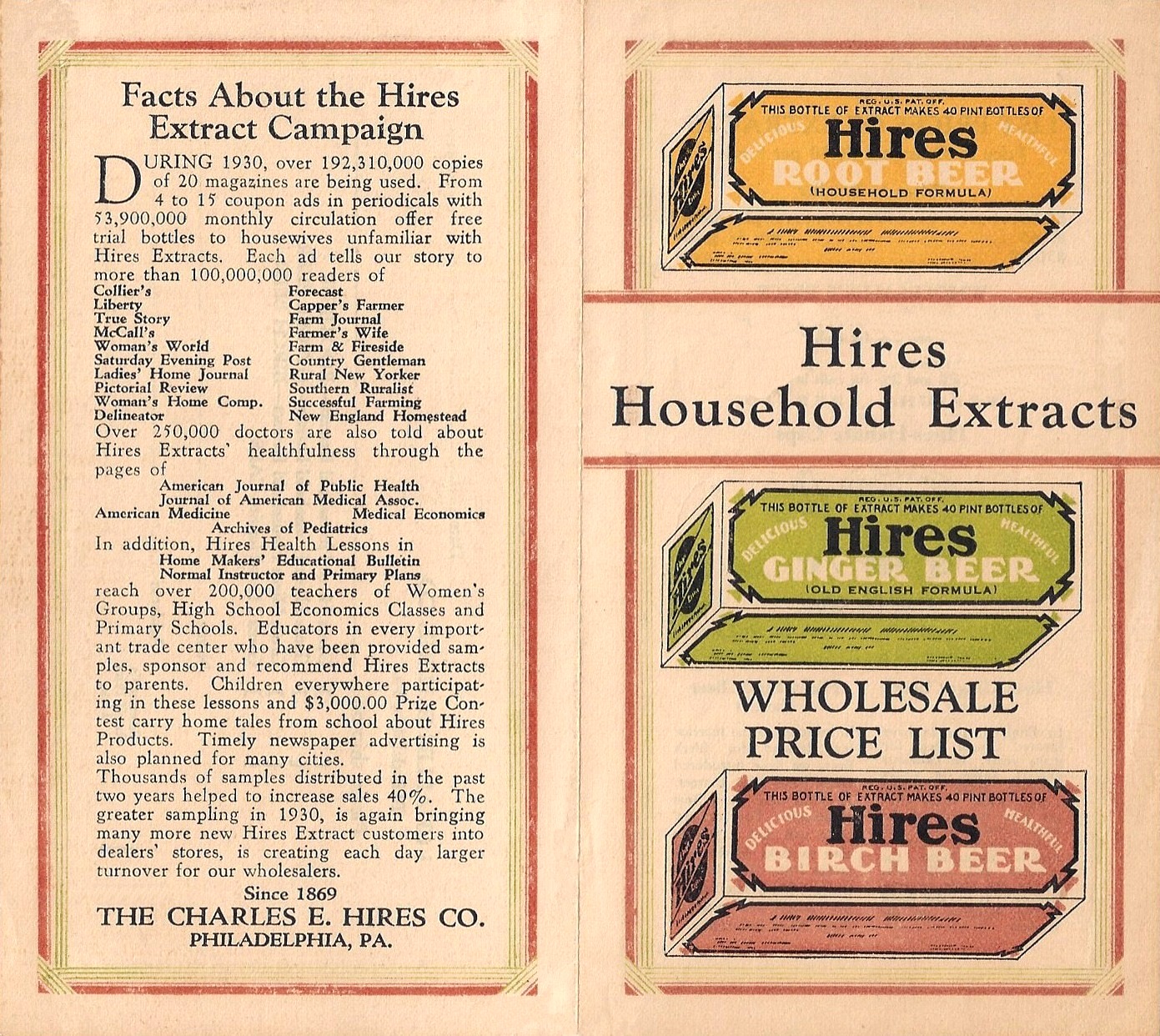

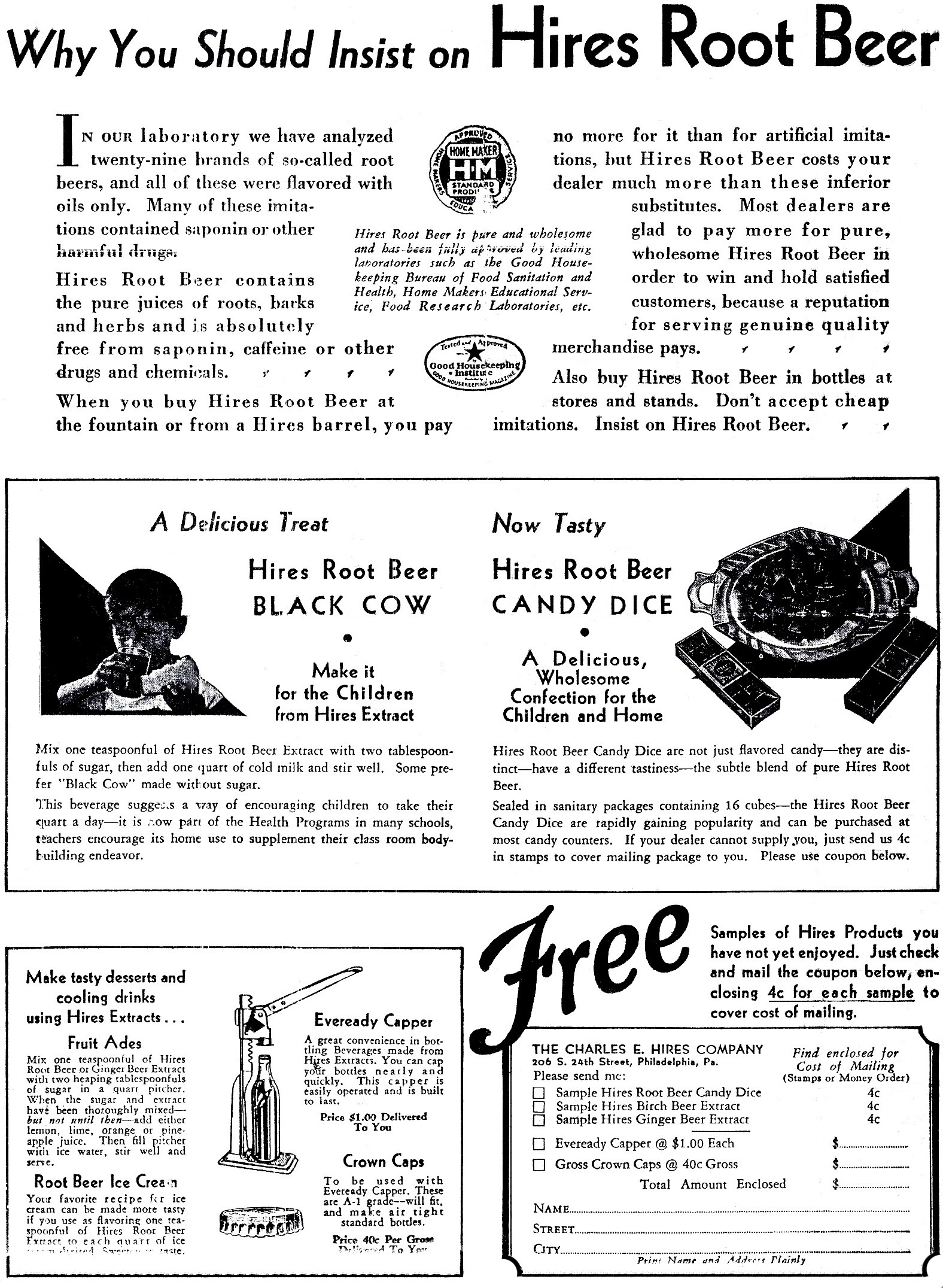
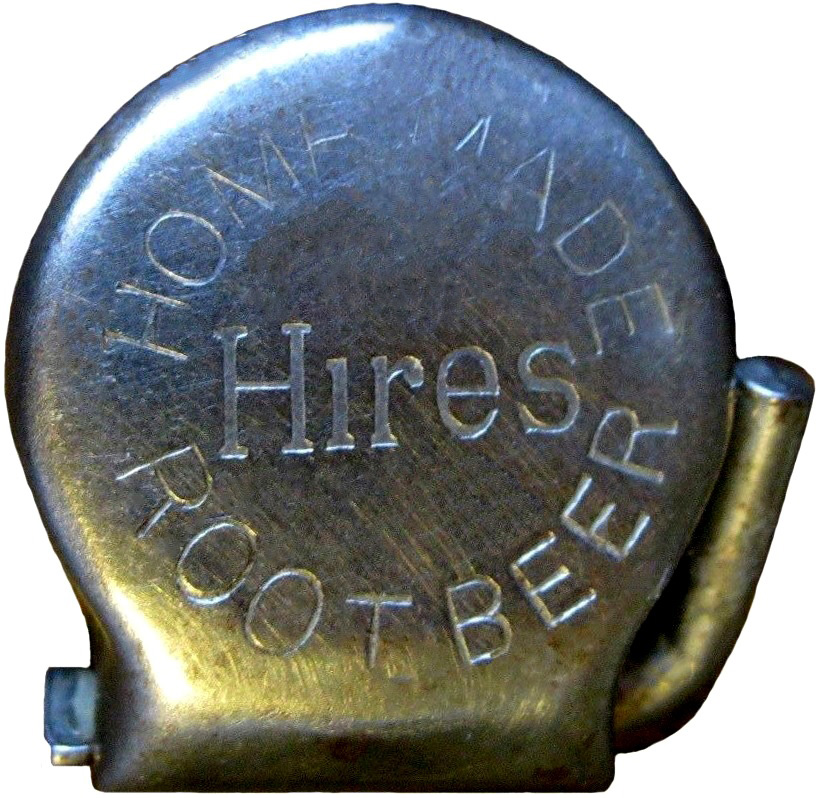
%20Home%20Made%20Root%20Beer%20-%20metal%20crown%20Hires%20Hantite%20Cap%20closure%20with%20leather%20lining%20-%20bottom.jpg)
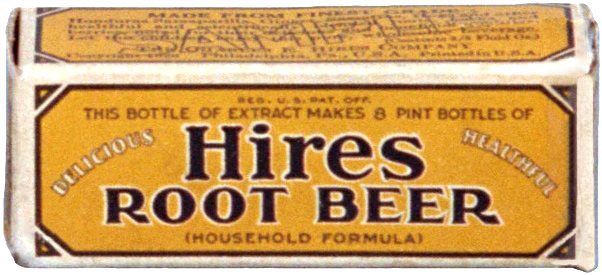
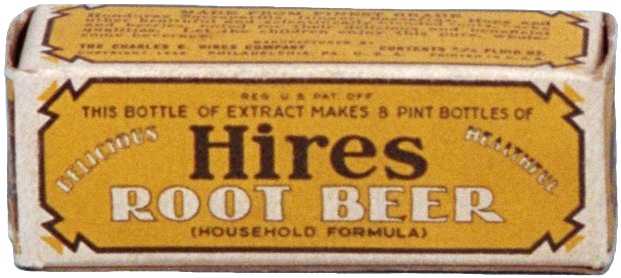



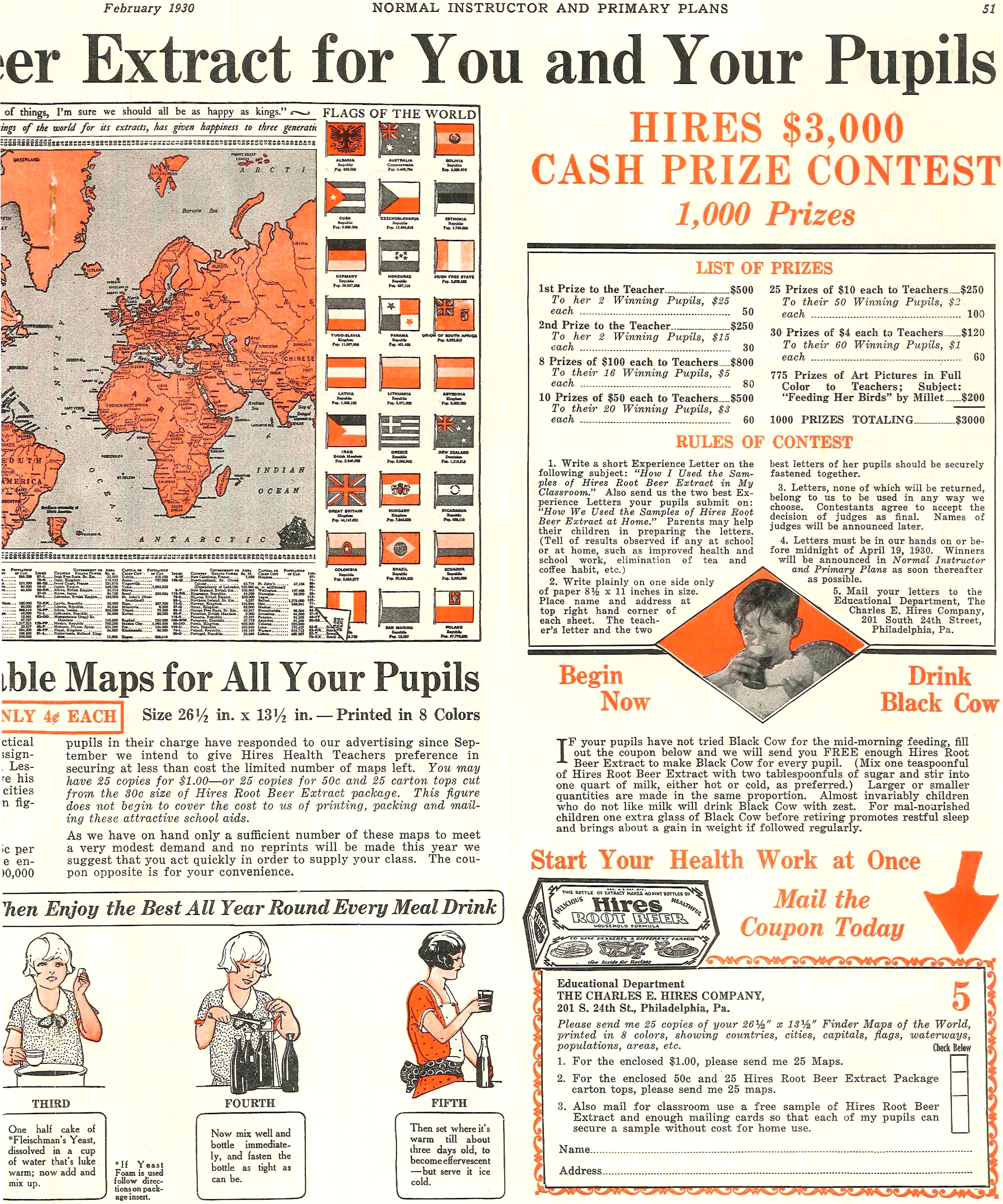
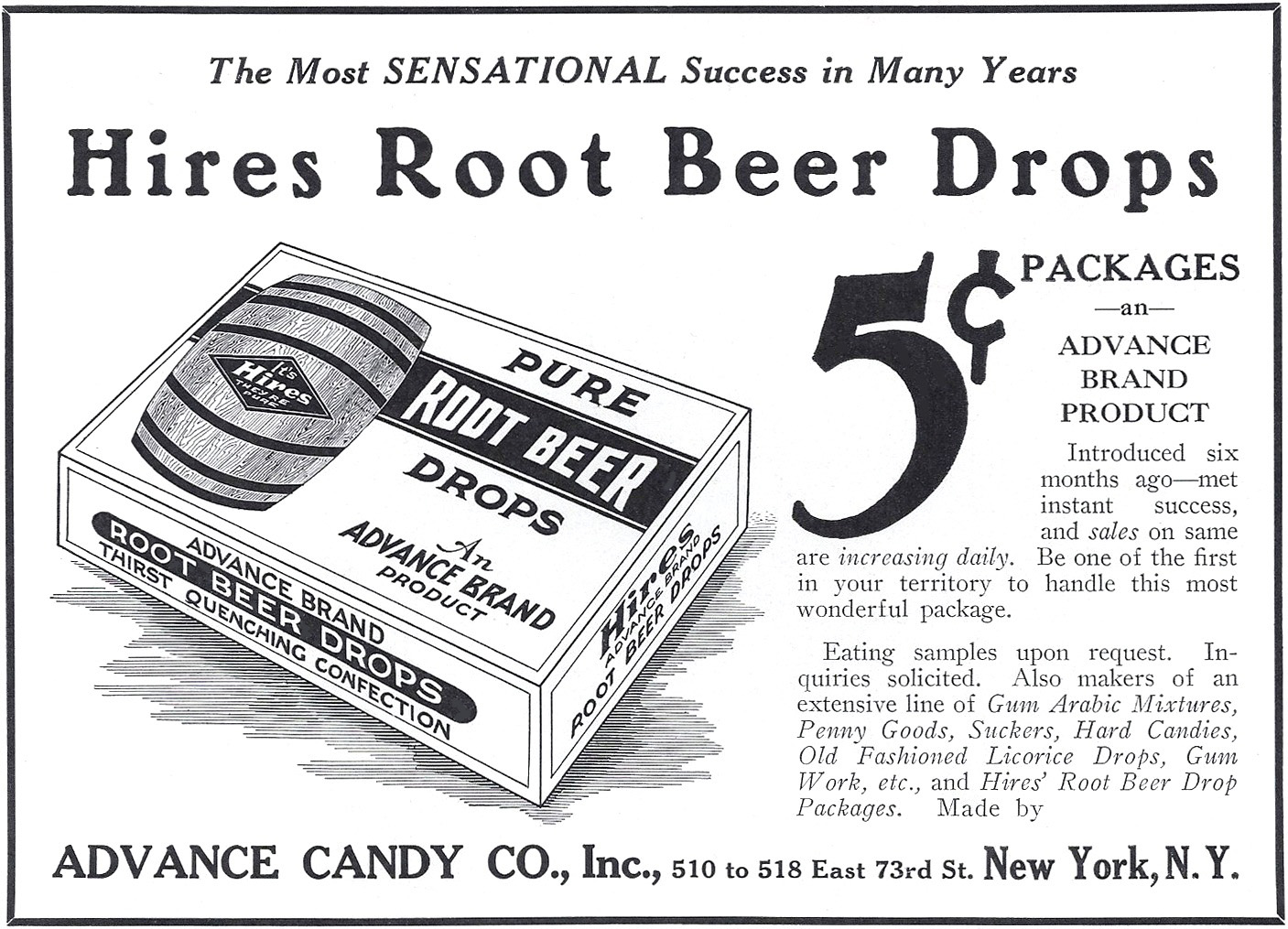
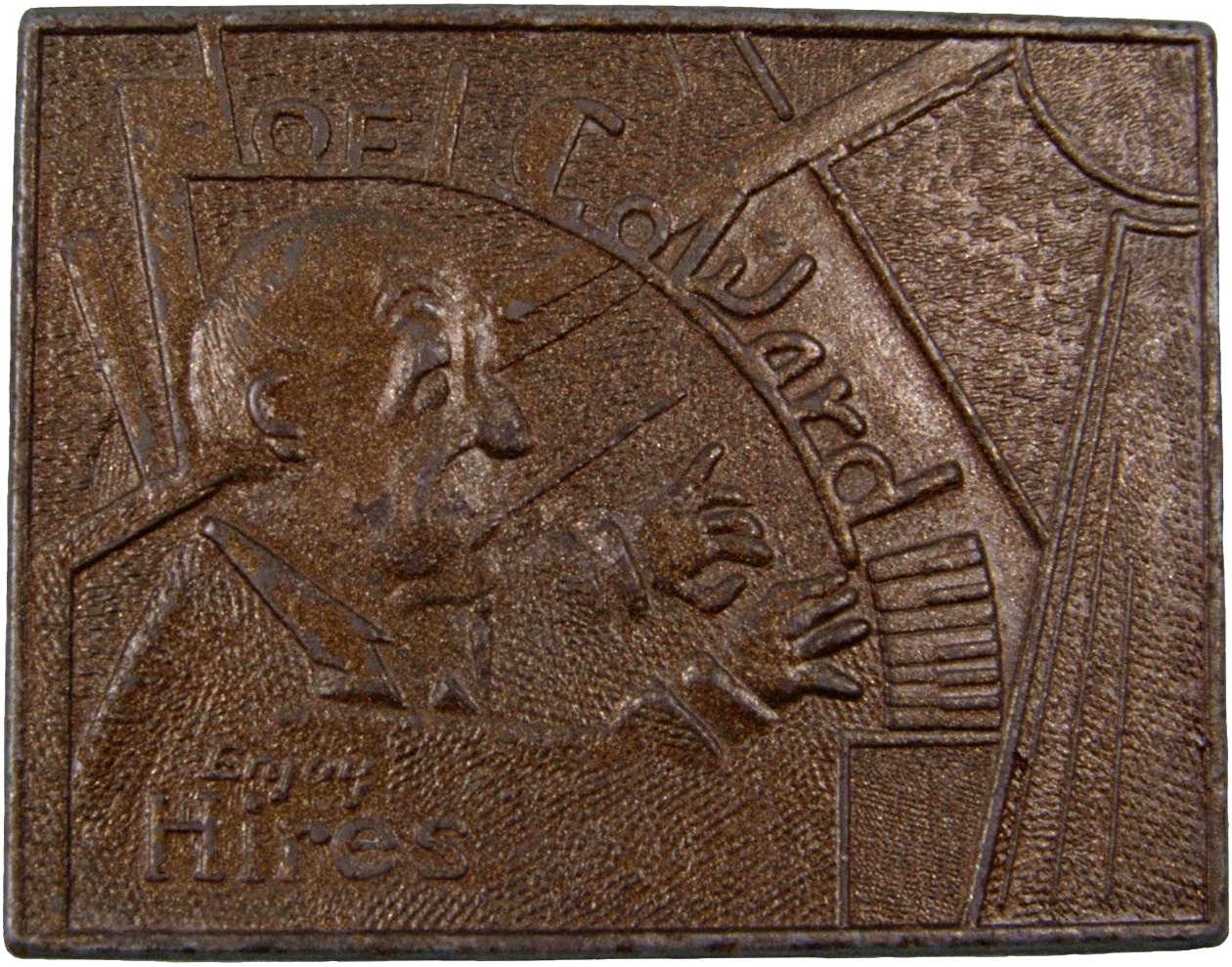



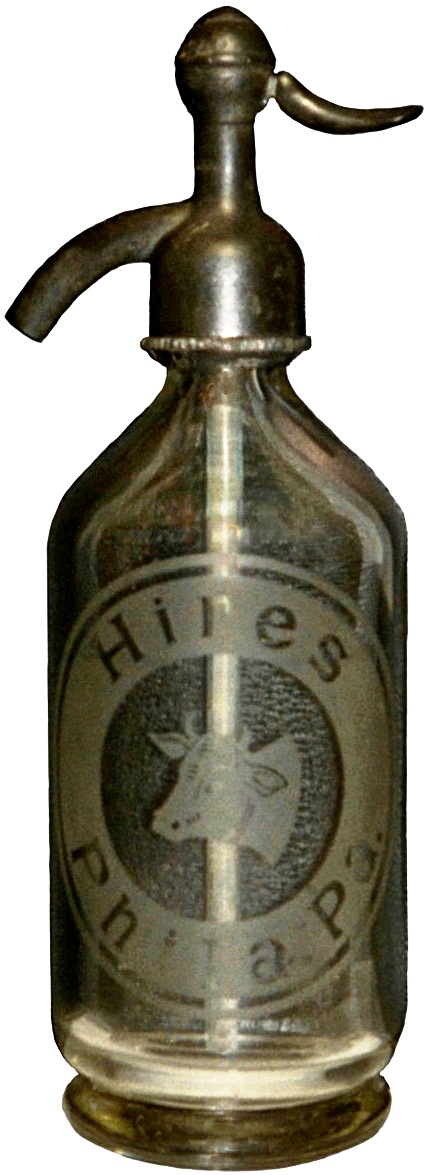
%20Root%20Beer%20(Household%20Formula)%20Pictorial%20Review%20-%20August,%201930.jpg)








